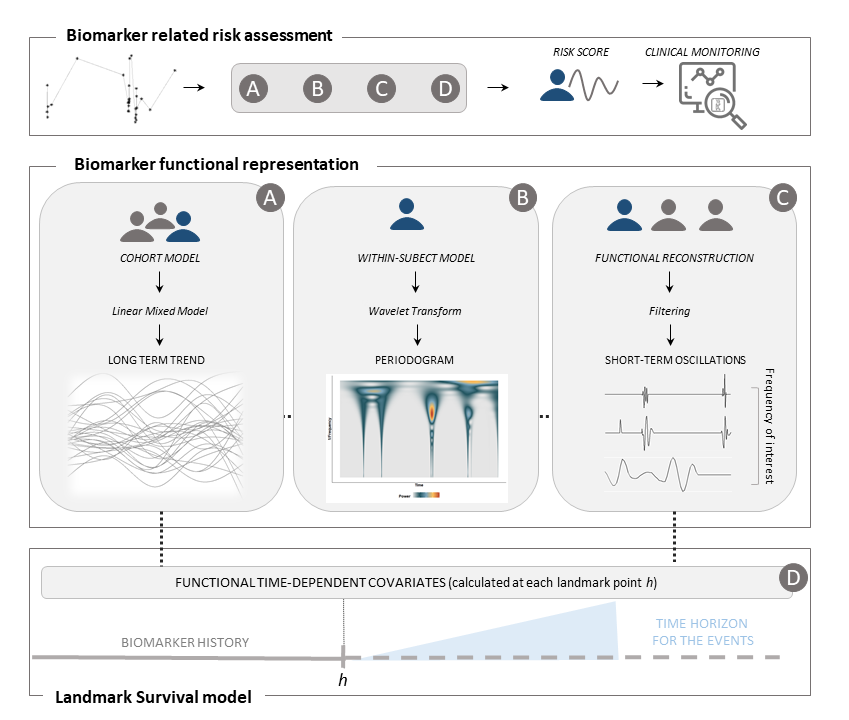A new MOX report entitled “A wavelet-mixed landmark survival model for the effect of short-term oscillations in longitudinal biomarker’s profiles” by Gregorio, C.; Barbati, G.; Ieva, F. has appeared in the MOX Report Collection.
The report can be donwloaded at the following link:
https://www.mate.polimi.it/biblioteca/add/qmox/48/2022.pdf
Abstract: Statistical methods to study the association between a longitudinal biomarker and the risk of death are very relevant for the long-term monitoring of frail subjects. In this context, sudden crises can cause the biomarker to undergo very abrupt changes. Although these oscillations are typically short-term, they often contain relevant prognostic information for the survival endpoint of interest. We propose a method that couples a linear mixed-model with a wavelet smoothing to extract both the long-term component and the short-term oscillations from the individual longitudinal biomarker profiles. We then use them as predictors in a landmark survival model to study their dynamic association with the risk of death. To illustrate the method, we use the clinical application which motivated our work, i.e., the monitoring of potassium in Heart Failure patients. The dataset consists of real-world data coming from the integration of Administrative Health ! Records w ith Outpatient and Inpatient Clinic E-chart. Our method not only allows us to identify the short-term oscillations but also reveals their prognostic role in predicting the risk of death, according to their duration and, demonstrating the importance of including such short-term oscillations into the modeling. Compared to standard landmark analyses and joint models, the proposed method achieves higher predictive performances. In the context of the potassium monitoring, our analysis has important clinical implications since it allows us to derive a dynamic score that can be used in clinical practice to assess the risk related to an observed patient’s potassium trajectory.




